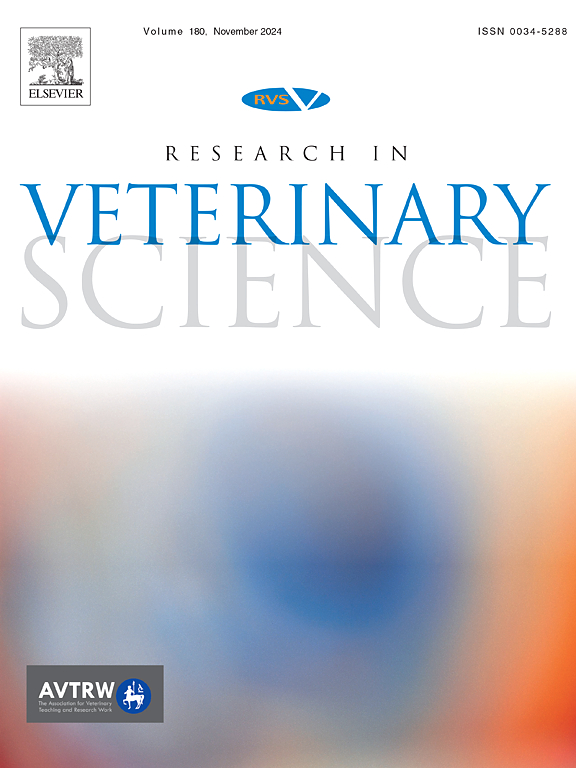Evaluation of a new smartphone-based stethoscope with one‑lead electrocardiogram in healthy sheep
IF 2.2
3区 农林科学
Q1 VETERINARY SCIENCES
引用次数: 0
Abstract
Diagnostic tests commonly used for assessing of cardiac diseases in clinical practice are not always available in small ruminants, therefore cardiac auscultation is a cornerstone in this species. The present study assesses the reliability of a new smartphone-based digital stethoscope featuring simultaneous phonocardiography and one‑lead electrocardiogram to evaluate heart sounds and electrocardiographic (ECG) findings in healthy sheep. Additionally, we compared the effect of breed (Bergamasca vs Comisana breed) on the ECG tracings obtained by the digital stethoscope. A total of 44 sheep (23 Bergamasca and 21 Comisana sheep) were recruited. No sheep ausculted abnormally with either the conventional or digital stethoscope. All audio recordings were considered interpretable in 40 sheep with substantial agreement (k = 0.755) between two operators. Conventional and digital ECG tracings showed sinus rhythm in all sheep and the limit of agreement analysis showed similar values between the two devices, but some ECG variables were not interchangeable. A perfect-to-good agreement was observed for heart rate, P wave duration/amplitude, PQ interval, QRS duration and QT interval; substantial difference for the S wave amplitude and moderate agreement (k = 0.569) for the T wave morphology between the two devices were observed. A fair agreement was found for the artifact presence (k = 0.395). Comparison of ECG variables between “Bergamasca” and “Comisana” breed showed differences (p < 0.05) for heart rate, QRS duration, QT duration and T polarity. In conclusion, the digital stethoscope Eko DUO is a practical and easy-to-use tool for assessing heart sounds and ECG signals in sheep in the field.
求助全文
约1分钟内获得全文
求助全文
来源期刊

Research in veterinary science
农林科学-兽医学
CiteScore
4.40
自引率
4.20%
发文量
312
审稿时长
75 days
期刊介绍:
Research in Veterinary Science is an International multi-disciplinary journal publishing original articles, reviews and short communications of a high scientific and ethical standard in all aspects of veterinary and biomedical research.
The primary aim of the journal is to inform veterinary and biomedical scientists of significant advances in veterinary and related research through prompt publication and dissemination. Secondly, the journal aims to provide a general multi-disciplinary forum for discussion and debate of news and issues concerning veterinary science. Thirdly, to promote the dissemination of knowledge to a broader range of professions, globally.
High quality papers on all species of animals are considered, particularly those considered to be of high scientific importance and originality, and with interdisciplinary interest. The journal encourages papers providing results that have clear implications for understanding disease pathogenesis and for the development of control measures or treatments, as well as those dealing with a comparative biomedical approach, which represents a substantial improvement to animal and human health.
Studies without a robust scientific hypothesis or that are preliminary, or of weak originality, as well as negative results, are not appropriate for the journal. Furthermore, observational approaches, case studies or field reports lacking an advancement in general knowledge do not fall within the scope of the journal.
 求助内容:
求助内容: 应助结果提醒方式:
应助结果提醒方式:


